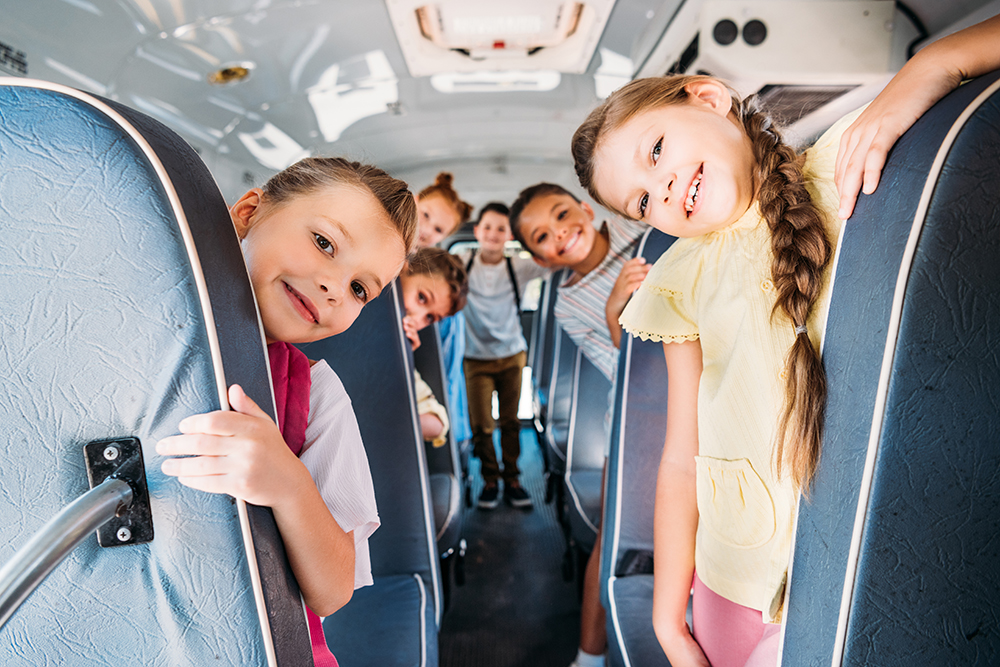It’s normal for students to feel stress and anxiety ahead of the new school year. Feeling nervous before entering a new classroom or grade level is common for most students – but these feelings of emotional distress might be heightened by the pandemic. According to a 2022 survey of 1,000 parents of school-aged children, 66% of students have reported anxiety about returning to school. More than half of students report feelings of depression and loneliness while others experience sleep issues and agitation about returning to the classroom.
As a parent, it can be heartbreaking to watch your child fight against stress and anxiety – especially when their emotions are completely valid. Every year brings new changes to the classroom experience, new friend circles, and potentially new buildings as kids enter middle and high school.
You can’t eliminate these feelings, but you can help your children identify and handle their emotions. Use this guide to prepare for the new school year.
Look for General Symptoms of Anxiety
Kids (and many adults) struggle to identify their feelings and express them properly. You might notice some changes in behavior ahead of the new school year that are related to their stress levels. If your child has a mystery tummy ache before visiting the school, it could be related to anxiety rather than gastrointestinal distress. A few signs that your child is anxious include:
- Changes in sleeping or eating, using the toilet more often
- Irritability and angry outbursts over small things
- Crying frequently
- Increased neediness – not wanting to leave your side
- Becoming fidgety or unable to sit still and concentrate
- Regressions in development like wetting the bed or thumb sucking
Some kids will process their anxiety internally. They might become more reserved and have trouble sleeping. Other kids will become loud and angry, demanding attention from parents. In both cases, they don’t know how to process their emotions and express them clearly.
Don’t Downplay Their Feelings
When kids experience anxiety, parents often try to make their kids feel better by downplaying their concerns. They say that everyone is nervous about returning to school and going back is no big deal. These statements are well-meaning – parents want to take big issues and make them seem small in the eyes of their kids. However, this strategy might actually invalidate the feelings of your kids and cause them to hide their emotions.
Instead, spend some time discussing their concerns. Your child is nervous about the first day – why? Are they worried about getting lost in the new school, which might be embarrassing for older students? Are they worried that they won’t have anyone to sit next to at lunch because their friends eat during other periods? These are all valid scenarios that can happen.
It is better to put words to their worries and brainstorm solutions if these problems arise than to negate or downplay legitimate feelings.
Make Your Kids Laugh By Reviewing the Worst Case Scenarios
As you help your kids express their anxiety and concerns, walk through different scenarios that can happen as a result of their stressors. One activity you can try to make them feel better is to review the best case and worst case scenarios in each situation. This teaches your kids that the more realistic situation is somewhere in between.
For example, if your child is nervous about seeing their friends, you can walk through a couple of scenarios:
- Best case: all of their friends are excited to see them and they are all in the same classes together.
- Most likely case: they might have classes with a few friends but they might not have classes with others. Some friends might have changed schools or joined other social groups over the summer. Most friends will be happy to see them.
- Worst case scenario: They don’t have any classes with any friends. They have to sit alone at lunch and don’t make any friends throughout the entire year.
To take the sting off of the worst-case scenario, try to come up with the most ridiculous and dramatic situations possible. For example, the worst-case scenario in a cafeteria might involve spilling lemonade on white shorts, making it look like your kid peed themselves. Okay, what’s the solution? Don’t wear white shorts on the first day. Or choose water instead of lemonade. Problem solved!
Reviewing the worst-case scenario in each situation can help your kids face their fears. It can reduce anxiety levels and will make your kids feel relieved when the worst possible outcome doesn’t actually happen – even if something bad on a lesser level does happen.
Know That Virtual Learning Impacted Most Students
Whether your kids returned to the classroom last year or are just entering in-person instruction this year, they likely were changed because of virtual learning. Both you and your kids are likely trying to figure out where they stand academically, emotionally, and socially because of the pandemic.
“With virtual learning, some children really struggled to stay engaged and motivated, grasp the material, and remain connected with friends and teachers,” says Elizabeth Reichert, a pediatric and adolescent psychologist at Stanford Children’s Health. “But there were other children, often those who were shyer or had difficulties in large-group settings, who thrived.”
Some kids might dread returning to school because they are still behind in where their teachers expect them to be. Because they missed core concepts, it’s hard to learn new material that builds on it. Other kids might feel confident academically but feel anxiety sitting in a large class again. Understand what your child is feeling as they move further away from virtual learning.
Take Advantage of Back-to-School Programs
Most school districts understand that kids feel stress and anxiety before returning to school. This is why they take steps to make the transition easier. Check to see if your school has any Meet the Teacher nights or back-to-school socials before the first day. There are a few key benefits of these activities:
- Students can learn where their classes are, reducing the chances of getting lost on the first day.
- Kids can find out which friends they have classes with, addressing the anxiety of being alone during the school year.
- Both parents and students can meet the teachers, creating a channel of communication that can remain strong throughout the year.
These events are particularly useful if your child is enrolling in a new school. If there aren’t available events, see if your child can at least visit the school before the first day to become familiar with it.
Both Kids and Adults Need to Learn How to Handle Anxiety
Stress is a part of life, which means your kids need to develop healthy habits to identify it at a young age. When kids can identify emotions and put words to their feelings, they can take control of how they react to the world around them. At Family Resources, these are all core concepts related to our SNAP (Stop, Now, And Plan) program. Kids ages 6-11 participate in a 13-week program to better understand their emotions and actions.
Learn more about SNAP and see if it’s right for your child.
##


